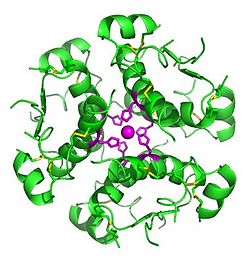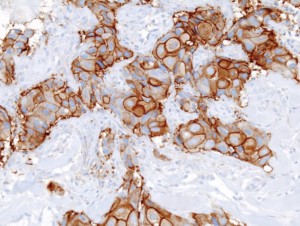Diabetes is a disease where there is too much sugar (glucose) in the blood.
Glucose enters your body from the foods you eat such as cakes, fruits, pasta and bread. Your body uses glucose as energy for everything you do.

The insulin peptide structure
Insulin is a hormone that is made in the pancreas when there is too much glucose in the blood. Insulin acts like a key that opens the doors that lets glucose move from the blood and into your cells. It is then used for energy.
When someone’s body loses its ability to produce Insulin, they have Type 1 Diabetes and when someone’s Insulin loses its ability to ‘open the door’ to their cells, they have Type 2 Diabetes.
Symptoms
- Frequent urination
- Dehydration
- Thirst
Problems caused by Diabetes
- Blindness
- Kidney failure
- Problems with legs and feet
- Death
Some facts about Diabetes…
Type 1 Diabetes
- Genetic (inherit from parents)
- Autoimmune condition (your immune system attacks your pancreas, leading to Diabetes)
- Begins when you are a kid
- Need to inject Insulin into your body everyday for treatment
Type 2 Diabetes
- Lifestyle (lack of exercise, obesity)
- Can happen at any age
- Need to live a healthier life, exercise more and sometimes take medicines for treatment.
Discussion Points: Diabetes is one example of where a biomarker test is used on a daily basis by patients. Here the focus is on self-management not diagnosis. Can you think of any other health issues that would benefit from such a strategy?


